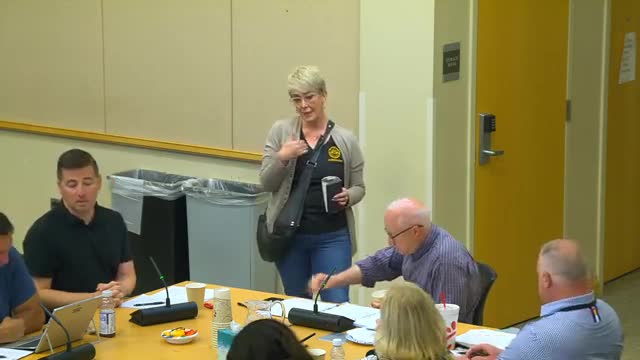City embraces AI to revolutionize emergency response systems
October 10, 2024 | Aurora City, Douglas County, Colorado
This article was created by AI summarizing key points discussed. AI makes mistakes, so for full details and context, please refer to the video of the full meeting. Please report any errors so we can fix them. Report an error »

In a recent government meeting, officials discussed significant advancements in emergency response technology and capital planning aimed at enhancing public safety services. The dialogue centered on the integration of artificial intelligence (AI) into the call handling system, which is designed to improve the efficiency of emergency response during high-volume incidents.
The new system will utilize AI to identify the origin of calls, prioritize them based on urgency, and manage incoming inquiries more effectively. This innovation aims to alleviate the burden on call operators during major events, such as accidents or public disturbances, by automatically addressing common inquiries and allowing operators to focus on more critical situations. For instance, if multiple calls are received about the same incident, the system will provide automated responses to non-involved callers, ensuring that urgent cases, like medical emergencies, are prioritized.
Officials emphasized the importance of this technology in creating a more responsive and efficient emergency service. The AI system will not only streamline call management but also enhance the overall capacity to respond to emergencies, potentially saving lives by reducing response times.
Additionally, the meeting highlighted ongoing efforts to improve language translation capabilities within the emergency response framework. A partnership with RapidSOS is set to facilitate real-time translation of information, which will help responders communicate more effectively with non-English speaking callers. This initiative aims to minimize reliance on live translators during urgent situations, thereby expediting the response process.
The discussions also touched on the long-term staffing strategy for emergency services, with a focus on reducing the current dependency on firefighters for dispatch duties. Officials are working towards a fully staffed call center, which would allow for a more fluid and efficient operation.
Overall, the meeting underscored a commitment to leveraging technology to enhance public safety services, with plans for continued discussions on capital planning and future growth strategies. The integration of AI and improved communication tools represents a significant step forward in the city's emergency response capabilities.
The new system will utilize AI to identify the origin of calls, prioritize them based on urgency, and manage incoming inquiries more effectively. This innovation aims to alleviate the burden on call operators during major events, such as accidents or public disturbances, by automatically addressing common inquiries and allowing operators to focus on more critical situations. For instance, if multiple calls are received about the same incident, the system will provide automated responses to non-involved callers, ensuring that urgent cases, like medical emergencies, are prioritized.
Officials emphasized the importance of this technology in creating a more responsive and efficient emergency service. The AI system will not only streamline call management but also enhance the overall capacity to respond to emergencies, potentially saving lives by reducing response times.
Additionally, the meeting highlighted ongoing efforts to improve language translation capabilities within the emergency response framework. A partnership with RapidSOS is set to facilitate real-time translation of information, which will help responders communicate more effectively with non-English speaking callers. This initiative aims to minimize reliance on live translators during urgent situations, thereby expediting the response process.
The discussions also touched on the long-term staffing strategy for emergency services, with a focus on reducing the current dependency on firefighters for dispatch duties. Officials are working towards a fully staffed call center, which would allow for a more fluid and efficient operation.
Overall, the meeting underscored a commitment to leveraging technology to enhance public safety services, with plans for continued discussions on capital planning and future growth strategies. The integration of AI and improved communication tools represents a significant step forward in the city's emergency response capabilities.
View full meeting
This article is based on a recent meeting—watch the full video and explore the complete transcript for deeper insights into the discussion.
View full meeting
